By far the
highlight of Mich’s and my ten days of trekking in Nepal’s Upper Mustang region
was our day trip north of Lo Manthang to the Chinese-Tibetan border. We had the
use of a jeep and departed pre-dawn to take advantage of the calm morning in a
region that is almost always windy. It took about 75 minutes to travel the
barely 11 miles to the edge of the plateau where the Kali Gandaki river begins,
at about 4600 m (15,100 feet) in elevation.
One of the
first birds we saw was Black-headed Mountain-Finch in swirling flocks, much
like the winter flocks of their New World congeners, the rosy-finches.
Another
exciting find were White-rumped and Blanford's Snowfinches, barely known from
Nepal. Not a true finch, these are actually in the same family as House
Sparrow. This is the best shot I could get of Blanford’s.
A big
surprise was a Pallas's Gull walking around on the barren flats, and we
eventually saw three before they picked up and flew north. This valley appears
to be a migratory pathway for these and several other species of birds; we also
saw Ruddy Shelduck, Bar-headed Goose, and several raptors headed north.
My lifer Saker,
very reminiscent of a Prairie Falcon, was on this solar panel installation on
the China side of the border fence.
Mammals were
especially exciting up here. These are Procapra
picticaudata, Goa, also called
Tibetan Gazelle. They were discovered here in Nepal for the first time only
about 13 years ago.
A distant
speck might have been an interesting raptor on the ground, but through the
scope and also magnified with our digital cameras we realized it was Vulpes ferrilata, Tibetan Sand Fox.
It turns out
that the main prey item for the fox is Ochotona
curzoniae, Plateau Pika, also
called Black-lipped Pika. They were abundant here, making large areas of
burrows, much like prairie-dog towns. These burrows are use by the snowfinches
for shelter and nesting.
On the way
back down the mountain we checked the steep mountain slopes. Red-billed Chough
was one bird we saw every day of our trip, but I barely managed just one photo.
A huge score
was this pair of Tibetan Snowcocks that we first heard then spotted well below
the road.
Very close
to the road on the ground was a pair of Golden Eagles, much rarer here than in
North America.
We had lunch
back down in the Kali Gandaki valley (only a few miles away but much lower at
4030 m, 13,225 feet). Here were several Marmota
himalayana, Himalayan Marmot.
This Blue
Rock Thrush hopped up just a few meters away.
I finally
got a close shot of Rock Buntings, a bird we tallied every day of the trip, and
a species I first saw 26 years ago in the Black Forest of Germany where it is a
very local breeder.
Lhakpa
spotted the movement of a small mammal from the car, and we got several
glimpses and some lucky shots of this Mustela
altaica, Mountain Weasel.
Back in Lo Manthang
for the afternoon, Mich and I wandered around the historic walled city, which
is said to look like a Game of Thrones movie set. I’ve never seen the tv show,
and now that I’ve been to Lo Manthang, I don’t need to.
We also
birded the walled farm plots that surround the town, finding another Eurasian
Hoopoe, of which I obtained some video.
After
experiencing the treeless Upper Mustang for a few days, we decided to change
our plans and take a jeep ride all the way back south to Muktinath, a popular tourist
and trekker destination on the Annapurna Circuit where the more vegetated
hillsides should have some different birds. We thought the day would be a long,
slow, bumpy and birdless drive, but just a few kilometers from Lo Manthang we screamed
“roknus” to our driver when a large wheeling flock of birds caught our eye. The
flock turned out to be over 200 Red-fronted Serins, but our attention was soon
drawn to the nearby hillside where several small birds were sunning and singing
and chattering in a jumbled chorus. We soon realized they were Mongolian Finches,
known from Nepal only from two sight records 35 years ago and unknown from
nearby Tibet.
This group
had about 25, but a few hundred yards down the road was another wheeling flock
of about 150 birds.
Along with
both finches were several Twites, also just barely known from Nepal but more
expected here given their known presence in Tibet just to the north.
Gray-backed
Shrike is a common bird in this area.
When we got
to Muktinath in the late afternoon, we walked up to the temple that is a pilgrimage
site for countless numbers of Hindus, many from India who travel several days
by bus to get here. The temple is in a walled compound built around a mountain
spring that supports a few acres of poplar trees. Along the creek below the
spring was this Solitary Snipe; this is probably the single best place for this
species in Nepal.
A family
group of Variegated Laughingthrushes was very conspicuous in the garden.
Just outside
the compound was a group of what we identified as Great Rosefinches, though
telling them apart from Streaked Rosefinches is a bigger challenge than we
expected.
We had seen
Hill Pigeon a few times on our trek, but mostly distant birds in cliffs and
flying over; here in Muktinath they seem to have taken on some behaviors from
the feral-type Rock Pigeons. They look very similar, but Hill Pigeons have a
distinctively darker hood, and whey they fly they show a very striking white
tail band.
On our full
day in Muktinath we hiked towards the Thorung-La pass, making it only about
halfway before lunch. We didn’t see a lot of species, but we had several
Himalayan Snowcocks singing from the hillsides, one of our main target birds.
At our final point, at 4700 meters ( 15,420 feet) elevation, our guide Lhakpa
spotted this Red-fronted Rosefinch foraging in the tundra-like vegetation.
I noticed
that it fed very much like the Short-tailed Finch of the Bolivian Andes, which
occupies a very similar habitat.
In this area
so popular with trekkers, the Bharal (Himalayan Blue Sheep) are very used to
people.
Rosy Pipits
were singing all along the hike.
One of the
more common butterflies was Vanessa
cardui, Painted Lady – the same species we have in North America.
This looks
much like our Milbert’s Tortoiseshell but is the related Aglais caschmirensis, Himalayan Tortoiseshell.
In the
afternoon we walked around the small farm fields below town where we flushed
several Olive-backed Pipits.
We also came
across a small mixed group of wintering or migrant Black-throated and
Red-throated Thrushes.
At this
elevation, mid-April is still very early spring, and these Primula sp. primroses were at their peak.
On our final
day we trekked back to Jomsom, hoping to get into some forest. Just outside of
Muktinath we had our best views of the gorgeous Snow Pigeon next to the trail.
We flushed a
flock of birds off the trail that we thought would be snowfinches or
mountain-finches, but they turned out to be wintering or migrant Himalayan
Accentors, possibly the only accentor that flocks like finches. The common name
comes from the scientific name, Prunella
himalayana, but some lists call it the more appropriate Altai Accentor
after its breeding range in those mountains of China, Mongolia, Russia, and
Kazakhstan; it is known from the Himalayas only as a winter guest.
We did get
to some nice pine forest but didn’t see to many new birds here. One nice
surprise was a Mistle Thrush, a bird little known from Nepal.
We had lunch
in the quaint, old village of Lupra.
The usual
afternoon wind picked up after lunch, and along our final hike of nearly six
miles along the rocky river beds we hoped for a sighting of Ibisbill. But we
were buffeted by persistent winds over 30 miles per hour, sometimes gusts
probably over 50, sending blasts of sand into our faces. It felt more like 15
miles, and we saw few birds.
We had a
good night’s rest in Jomsom and were ready for the 6:40 a.m. flight back to
Pokhara. But after waiting in the airport for nearly five hours, as the wind
began to make its daily appearance, we were finally notified that all flights
were canceled. By 11:00 Lhakpa had arranged a jeep for us to make what turned
out to be a 7 ½-hour, extremely bumpy ride through one of the largest gorges in
the world back to Pokhara. But only about an hour into the drive I saw this
perfect view of the Kali Gandaki and asked the driver to stop.
Almost
immediately my sight landed on one of my most-wanted birds in the world –
Ibisbill!
A beautiful shorebird
in its own family, its behavior and habitat are as distinctive as its
appearance.
Before we
moved on, we checked out the lush habitat along the roadside, seeing several
new birds for the trip, such as Rufous Sibia and Golden-spectacled Warbler, and
also recording what seemed like a familiar song from the bamboo undergrowth but
which we later identified as Immaculate Cupwing – a bird neither of us had ever
seen!
We arrived
in Pokhara well after dark, got on the first flight back to Kathmandu the next
morning, and had a joyful reunion with the Coker family upon our arrival.
x
x



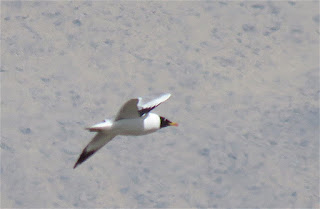

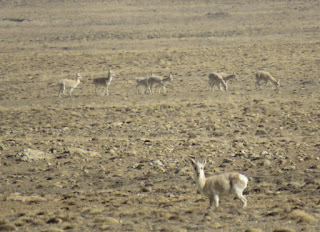



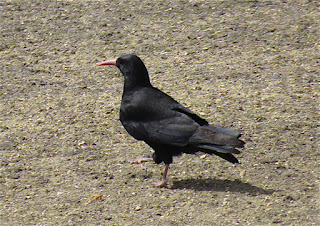













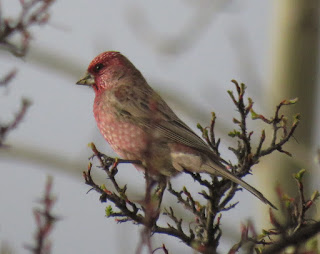




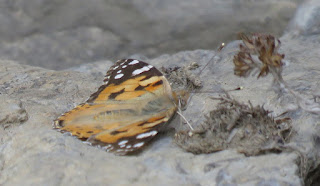

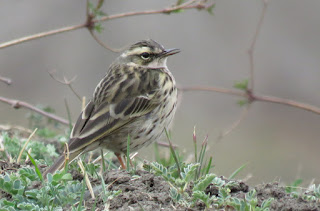


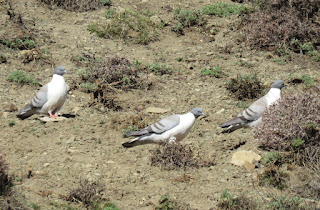














No comments:
Post a Comment